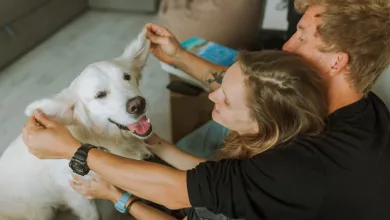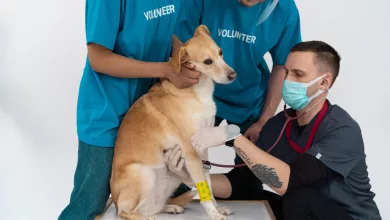It’s not uncommon for pets to spend a good portion of their day snoozing. While it’s normal for animals like cats and dogs to sleep more than humans, excessive sleeping might be a sign that your pet needs more physical or mental stimulation. If you’re concerned that your furry friend is sleeping too much, here’s how to determine if it’s an issue and some tips to get them moving and engaged.
How Much Sleep Is Normal for Pets?
Different pets have varying sleep needs based on their species, age, and activity level.
- Dogs: On average, dogs sleep 12–14 hours a day. Puppies and senior dogs may sleep even more.
- Cats: Cats are natural nappers, sleeping 12–16 hours a day, often in short bursts.
- Small animals: Rabbits, hamsters, and other small pets may have shorter, irregular sleep patterns but still rest extensively.
If your pet’s sleeping patterns align with these averages, they are likely just following their natural rhythm. However, if your pet seems unusually lethargic or uninterested in activities, it could be a sign of boredom, lack of exercise, or even health issues.
Signs Your Pet Might Be Sleeping Too Much
- Disinterest in playtime or walks
- Weight gain due to inactivity
- Behavioral changes, such as irritability or withdrawal
- Reduced appetite or general lethargy
- Lack of excitement when favorite toys or treats are introduced
If you notice any of these signs, consult a veterinarian to rule out medical conditions before making lifestyle changes.
Tips to Get Your Pet Active
1. Establish a Routine
Pets thrive on routine. Set a consistent schedule for feeding, walks, and playtime to keep them engaged and prevent boredom.
What to do: Take your dog for daily walks at the same time each day. For cats, schedule interactive play sessions with toys like feather wands or laser pointers.
2. Incorporate Interactive Toys
Toys that stimulate your pet’s mind and body are great for keeping them active. Puzzle toys, treat-dispensing balls, and interactive games can keep them engaged while encouraging movement.
For dogs: Try a tug-of-war rope or a frisbee for outdoor fun.
For cats: Use toys that mimic prey, such as small mice or automated motion toys.
3. Create Space for Exploration
Pets love to explore new environments. Giving them access to different areas of your home or yard can spark curiosity and movement.
Ideas:
- Build an obstacle course for your dog with cushions and tunnels.
- Provide a climbing tree or scratching posts for your cat to explore.
4. Encourage Social Interaction
Many pets are naturally social and enjoy interacting with other animals or people. Socialization can provide both mental and physical stimulation.
What to try:
- Arrange playdates with other dogs in your neighborhood.
- Introduce your cat to new toys or games that involve human interaction.
5. Use Treats Strategically
Treats can be a great motivator to get your pet moving. Use them to encourage physical activity by hiding them around the house or incorporating them into training exercises.
Examples:
- Hide treats in different rooms to encourage your dog to search and explore.
- Toss treats to get your cat running or jumping.
6. Increase Outdoor Time
Fresh air and natural surroundings are excellent for boosting your pet’s energy levels. Outdoor activities provide new smells, sights, and sounds that can invigorate your pet.
Activities:
- Take your dog hiking or to a dog park.
- Allow your cat supervised time outside on a leash or in a secure enclosure.
7. Adjust Their Diet
Overfeeding or giving too many calorie-dense treats can contribute to lethargy. Make sure your pet’s diet is balanced and appropriate for their age, weight, and activity level.
Tips:
- Consult your vet about the right portion sizes and nutrition for your pet.
- Choose treats that are low in calories but high in nutrients.
When to Seek Veterinary Advice
If your pet continues to sleep excessively despite efforts to increase activity, or if they display other symptoms like reduced appetite, vomiting, or difficulty moving, it’s time to consult your veterinarian. Medical conditions such as hypothyroidism, arthritis, or depression can cause lethargy and may require treatment.
Conclusion
While it’s normal for pets to enjoy their naps, ensuring they get enough activity is essential for their physical and mental well-being. By incorporating structured routines, interactive toys, and outdoor adventures, you can keep your pet healthy, happy, and engaged.




